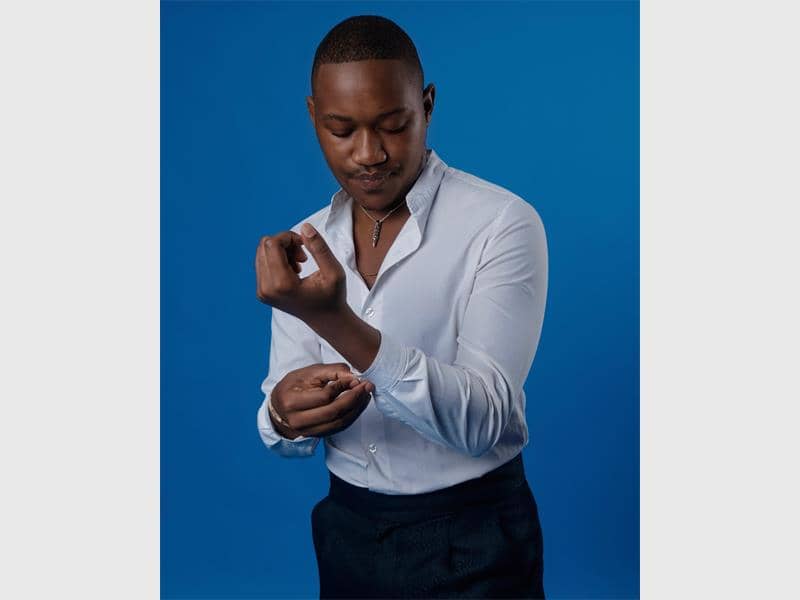Selecting the correct career path is a crucial decision with far-reaching implications. It is a choice that will shape your future, underscoring the importance of making an informed decision.
Over the next few weeks, The African Reporter will engage with business people, professionals, and other role players, focusing on a specific career field every week.
Through this, we aim to provide valuable guidance to our younger readers navigating their career choices. This week we give a platform to a career in fashion design.
Sandile Xaba has been a fashion designer for the past five years and his love for fashion began in high school where he would customise his school uniform.
“Later, during my gap year, I realised my true passion for fashion and decided to pursue it as a career. I also think it is my true gift because my grandmother was a tailor in her time but I was never interested in learning what she was doing,” Xaba said.
What is fashion design?
Fashion design is the art of creating clothing, accessories, and footwear that are both aesthetically pleasing and functional. It involves understanding textiles, colours, and silhouettes to create garments that reflect a particular style, theme, or brand identity.
What is a fashion designer, and what do they do?
A fashion designer is a creative professional responsible for designing and developing clothing, accessories, and footwear. They sketch designs, select fabrics, create prototypes, and work with manufacturers to produce their designs.
Where can I study to become a fashion designer?
There are numerous institutions offering fashion design courses worldwide. In South Africa, some reputable options include:
• Tshwane University of Technology
• University of Johannesburg
• Cape Peninsula University of Technology
• Durban University of Technology
How long does it take?
Typically, a fashion design diploma or degree takes three to four years to complete. However, some institutions offer advanced diplomas or postgraduate degrees that may require an additional years of study.
What high school subjects do I need?
While there are not specific subjects required for fashion design, having a background in art, design, and technology can be beneficial. Subjects like visual arts, design, and mathematics can help develop your creative and technical skills.
What are the roles and responsibilities of a fashion designer?
As a fashion designer, my roles and responsibilities include:
• Creating original designs and concepts.
• Developing patterns and samples.
• Selecting fabrics and materials.
• Collaborating with manufacturers and suppliers.
• Staying up-to-date with industry trends and forecasts.
What are the advantages and disadvantages that come with the job?
Advantages:
• Creative freedom and expression.
• Opportunities for self-employment or entrepreneurship.
• Constant evolution and innovation in the industry.
Disadvantages:
• High competition and pressure to stay relevant.
• Long working hours and tight deadlines.
• Potential for criticism and rejection of designs.
What skills do I need in order to become a successful fashion designer?
To succeed as a fashion designer, you’ll need:
• Strong creative and technical skills.
• Attention to detail and ability to work accurately.
• Effective communication and collaboration skills.
• Ability to adapt to trends and industry changes.
• Strong problem-solving and critical thinking skills.
Are there different types of fashion designers?
Yes there are:
• Haute couture designers (high-end, custom designs).
• Ready-to-wear designers (mass-produced, off-the-rack clothing).
• Accessory designers (specialising in hats, bags, shoes, etc.).
• Sustainable fashion designers (focusing on eco-friendly and responsible design practices).
Where do fashion designers work?
Fashion designers can work in various settings, including:
• Fashion houses and designer labels.
• Retail companies and department stores.
• Manufacturing and production companies.
• Freelance or independent design practices.
What advice would you give to someone else that aspires to become a fashion designer?
My advice would be to stay true to your creative vision, work hard, and be open to learning and growth. Networking and building relationships within the industry are also crucial. Most importantly, never lose sight of your passion for fashion!
At Caxton, we employ humans to generate daily fresh news, not AI intervention. Happy reading!
Stay in the know. Download the Caxton Local News Network App here.



